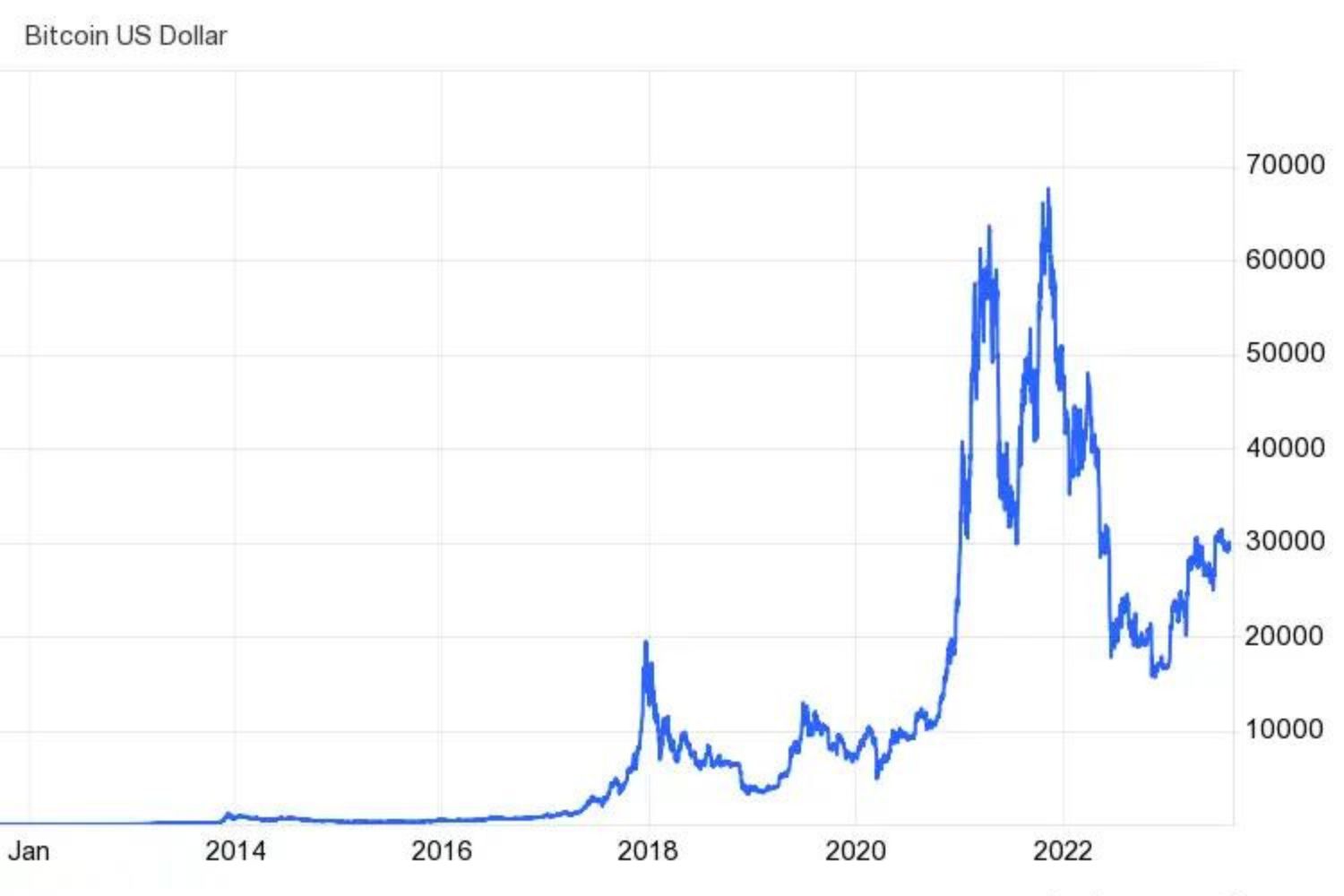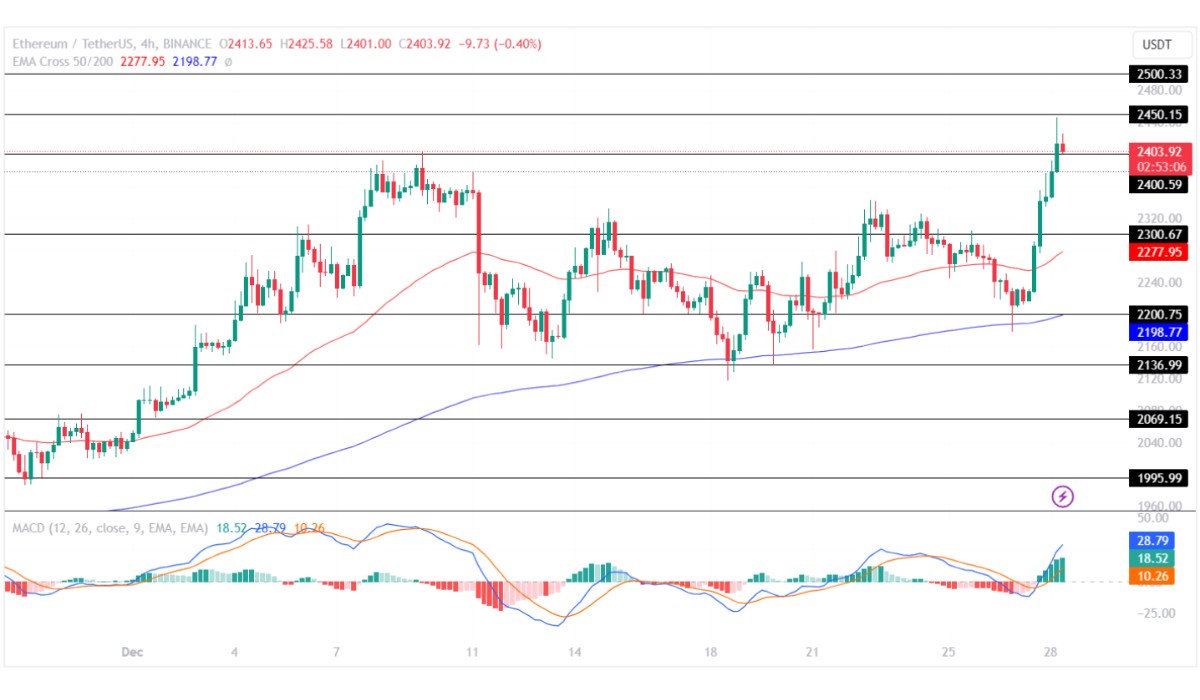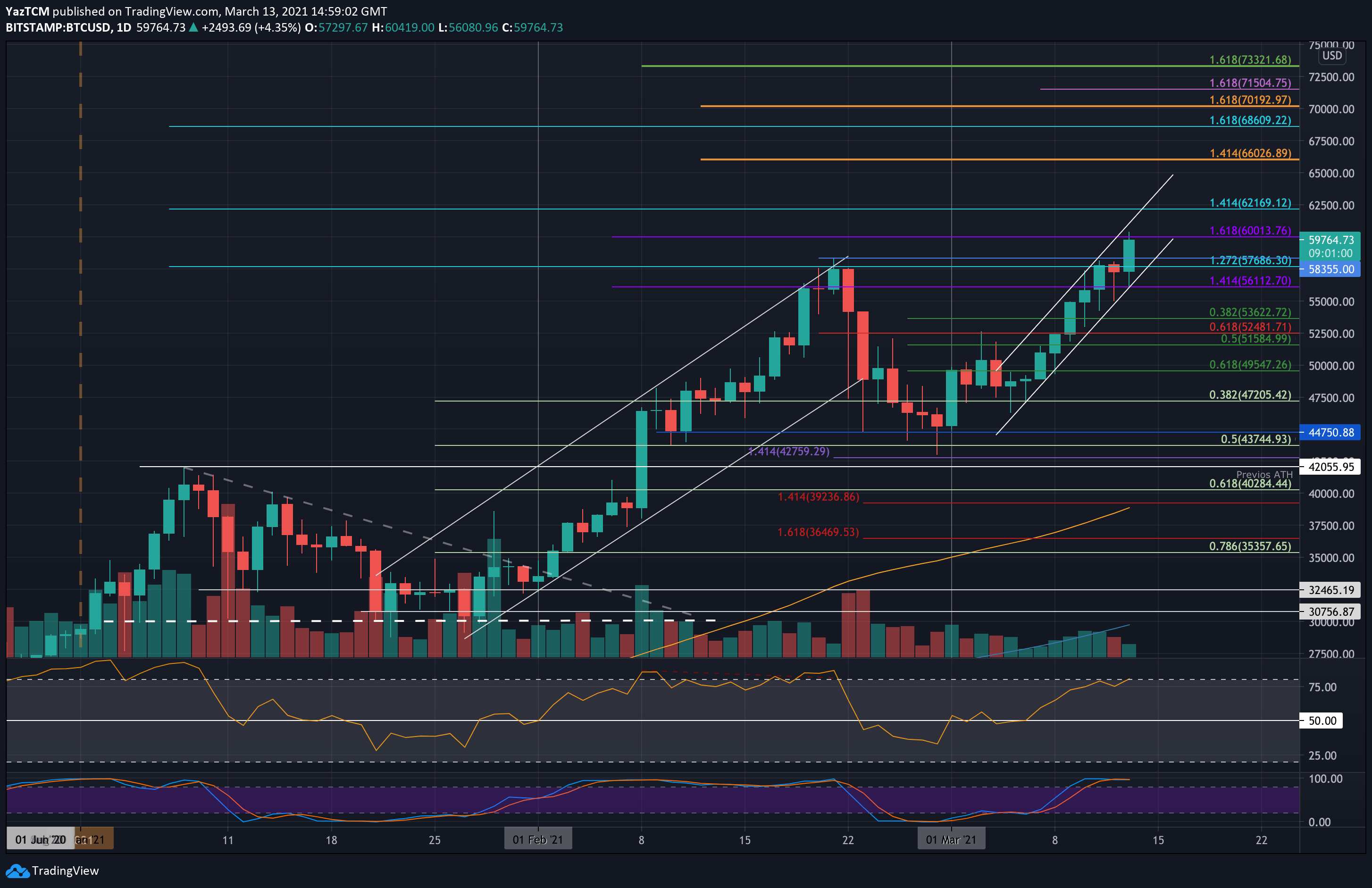Introduction
Bitcoin, the world’s first decentralized cryptocurrency, has captured the attention of investors, tech enthusiasts, and financial experts since its inception in 2009. Created by the enigmatic Satoshi Nakamoto, Bitcoin offers a revolutionary system of peer-to-peer electronic cash that bypasses traditional financial institutions.
Over the years, Bitcoin has gained immense popularity and has experienced significant fluctuations in its value. From its humble beginnings to reaching unprecedented highs, the cryptocurrency has been on a rollercoaster ride that has left many in awe.
This article explores the journey of Bitcoin’s price and its most notable achievements. We delve into the factors influencing its price surge, the historic bull run of 2017, the subsequent retraction, and the new all-time highs witnessed in more recent years. Whether you’re a crypto enthusiast or simply curious about the world of Bitcoin, this article aims to provide an overview of the cryptocurrency’s price evolution.
It’s important to note that the information provided here is based on historical data and market trends. It’s always advisable to conduct thorough research and consult with financial professionals before making any investment decisions. With that said, let’s dive into the captivating story of Bitcoin’s price journey.
The Beginnings of Bitcoin
To understand Bitcoin’s price journey, we must first delve into its origins. In 2008, an anonymous individual or group using the pseudonym Satoshi Nakamoto published a whitepaper titled “Bitcoin: A Peer-to-Peer Electronic Cash System.” This revolutionary document outlined the concept of a decentralized digital currency, challenging the traditional financial system.
On January 3, 2009, the Bitcoin network officially came into existence with the mining of its first block, known as the “genesis block.” This marked the birth of Bitcoin and the beginning of a new era in the world of finance.
Initially, Bitcoin had little to no value. It was mainly used as a means of exchange within a small network of early adopters and tech enthusiasts. However, as news spread about the potential of this innovative cryptocurrency, its value started to rise.
In its early years, Bitcoin faced skepticism and was often associated with illegal activities and the dark web. Nevertheless, its underlying technology, blockchain, gained recognition for its potential to revolutionize various industries beyond finance.
As more people began to understand the inherent value of Bitcoin and the transformative power of blockchain, the demand for the cryptocurrency started to grow. This increased demand, coupled with limited supply, served as a catalyst for Bitcoin’s price appreciation.
By the end of 2010, Bitcoin’s price had reached its first significant milestone. The cryptocurrency was trading at around $0.30. It may seem insignificant compared to its current value, but it marked the beginning of a remarkable journey that would see Bitcoin’s price soar to unimaginable heights.
With the foundation of Bitcoin laid and its potential becoming apparent, the stage was set for the cryptocurrency to embark on a path of growth, volatility, and a series of mesmerizing price highs.
Bitcoin’s All-Time Highs
The journey of Bitcoin’s price has been filled with notable milestones and astonishing price highs. From its humble beginnings to its current status as a global financial force, Bitcoin has experienced multiple periods of exponential growth.
One of the most remarkable moments in Bitcoin’s history came in December 2017 when it reached its all-time high price. At that time, Bitcoin was trading at an astonishing $19,783.06 per coin. This historic achievement captured the attention of the world and sparked a global frenzy around cryptocurrencies.
The bull run of 2017 was fueled by a combination of factors. Increased media coverage, institutional interest, and growing acceptance of Bitcoin as a legitimate investment asset all contributed to the surge in demand. Additionally, retail investors, attracted by the possibility of significant returns, flocked to the market, driving the price to unprecedented levels.
However, the euphoria was short-lived. In the months following its peak, Bitcoin’s price experienced a significant retraction. By early 2018, the cryptocurrency had dropped to around $6,000. This correction reminded investors of the volatility and unpredictability inherent in the cryptocurrency market.
Despite the subsequent price correction, Bitcoin’s all-time high of 2017 demonstrated the potential and mainstream appeal of cryptocurrencies. It highlighted the immense wealth that could be generated through early investments in this emerging asset class. This period also led to a proliferation of other cryptocurrencies, known as altcoins, as investors sought to find the next Bitcoin.
Since then, Bitcoin has embarked on a journey of recovery and resurgence. In 2020, nearly three years after its all-time high, Bitcoin once again reached unprecedented levels. On December 17, 2020, it surpassed the $20,000 mark, surpassing its previous record and solidifying its position as the leading cryptocurrency.
This recent surge in Bitcoin’s price can be attributed to several factors. Institutional investors, including hedge funds and payment companies, have shown growing interest in Bitcoin, signaling a shift towards wider adoption. Additionally, the ongoing global pandemic and its impact on traditional financial markets have pushed investors towards alternative assets like cryptocurrencies.
Bitcoin’s all-time highs serve as a testament to its resilience and ability to recover from significant price fluctuations. As the cryptocurrency continues to evolve, it remains an intriguing and unpredictable investment opportunity, captivating the attention of investors worldwide.
Factors Influencing the Price Surge
The price surge of Bitcoin has been influenced by a multitude of factors, ranging from market dynamics to technological advancements. Understanding these factors is crucial in comprehending the volatile nature of Bitcoin’s price and predicting its future movements.
One of the key drivers of Bitcoin’s price is supply and demand dynamics. Bitcoin operates on a limited supply model, with only 21 million coins that can ever be mined. This scarcity, combined with increasing demand, creates a situation where the price is driven up as more people seek to acquire the cryptocurrency.
Market sentiment also plays a crucial role in Bitcoin’s price surge. The perception of Bitcoin as a store of value or digital gold has grown over time, leading to increased investor interest during times of economic uncertainty. When traditional financial markets experience turbulence or inflation concerns arise, investors often turn to Bitcoin as a hedge against potential devaluation of their fiat currencies.
Technological developments and innovation in the cryptocurrency space also impact Bitcoin’s price. Positive advancements, such as the integration of Bitcoin into payment systems or blockchain technology adoption by major corporations, can drive up demand and therefore raise the price. Conversely, negative news, such as security breaches or regulatory crackdowns, can lead to sell-offs and price declines.
The involvement of institutional investors has had a significant impact on Bitcoin’s price surge in recent years. As more institutions recognize the potential of cryptocurrencies, they allocate funds to Bitcoin, driving up demand. This increased institutional interest adds credibility to the asset class and attracts more investors, further fueling the price surge.
Media coverage and public perception also influence the price of Bitcoin. Positive news stories and endorsements from influential figures can create a sense of FOMO (Fear Of Missing Out) among retail investors, leading to increased buying activity. Conversely, negative media attention or government regulations can create panic, resulting in selling pressure and price drops.
Last but not least, market manipulation can have an impact on Bitcoin’s price surge. Due to the relative lack of regulation in the cryptocurrency market, price manipulation schemes are not uncommon. Large holders, known as “whales,” can use their substantial holdings to manipulate the market and create artificial price movements.
Understanding these factors and their influence on Bitcoin’s price surge is crucial for investors and enthusiasts. However, it’s important to remember that the cryptocurrency market is highly speculative and often driven by irrational behavior. Therefore, it’s advisable to approach Bitcoin investment with caution and conduct thorough research before making any financial decisions.
The Bull Run of 2017
The year 2017 witnessed an extraordinary bull run in the world of Bitcoin. The cryptocurrency’s price skyrocketed to unprecedented levels, captivating the attention of the general public and financial institutions alike.
The bull run of 2017 was characterized by a dramatic surge in Bitcoin’s price, accompanied by an intense media frenzy and overwhelming investor enthusiasm. Starting from around $1,000 at the beginning of the year, Bitcoin’s price soared to its all-time high of nearly $20,000 by December.
Several factors contributed to the exponential growth experienced during this period. Increased media coverage of Bitcoin and cryptocurrencies drove greater awareness and curiosity among the broader public. Major news outlets reported on Bitcoin’s remarkable price appreciation, further fueling the hype around the cryptocurrency.
Moreover, institutional investors began to show interest in Bitcoin as an investment asset. This influx of institutional money into the market added legitimacy to Bitcoin and contributed to the surge in demand. The entrance of major financial institutions and hedge funds into the crypto space highlighted the potential for significant returns and attracted a broader range of investors.
Another key factor in the bull run of 2017 was the Initial Coin Offering (ICO) craze. ICOs allowed startups to raise funds by issuing their own tokens or cryptocurrencies on the blockchain. Many of these ICOs promised high returns and revolutionary ideas, attracting speculative investors who saw an opportunity to replicate the success of Bitcoin.
However, it’s important to note that the bull run of 2017 was not without its pitfalls. The rapid price increase led to concerns of a speculative bubble. Bitcoin’s price was driven by market exuberance, with many investors buying into the cryptocurrency at unsustainable levels. This speculative fervor eventually led to a significant price correction and a subsequent bear market in the following years.
The bull run of 2017 demonstrated both the incredible potential and inherent volatility of the cryptocurrency market. Many individuals saw substantial gains, while others experienced significant losses. This period served as a stark reminder that investing in cryptocurrencies carries inherent risks and requires careful consideration.
Despite the subsequent price correction and periods of market uncertainty, the bull run of 2017 played a crucial role in bringing cryptocurrencies into the mainstream consciousness. It sparked widespread interest and paved the way for further adoption and innovation within the crypto space.
Looking back, the bull run of 2017 remains an iconic period in Bitcoin’s history, capturing the imagination of investors around the world and forever leaving its mark on the cryptocurrency ecosystem.
Bitcoin’s Price Retraction
Following the exhilarating bull run of 2017, Bitcoin experienced a significant price retraction in the subsequent months. The rapid ascent of Bitcoin’s price raised concerns about a possible speculative bubble, leading to a correction and a period of market consolidation.
By January 2018, Bitcoin’s price had dropped to approximately $6,000. This correction served as a reality check for investors and highlighted the inherent volatility of the cryptocurrency market. Many individuals who had joined the market during the frenzy of the bull run faced substantial losses as the price retraced.
Several factors contributed to the price retraction. Firstly, regulatory concerns emerged as governments around the world grappled with how to regulate cryptocurrencies. Heightened scrutiny and caution from regulatory bodies had a dampening effect on investor sentiment and created uncertainty in the market.
Additionally, market sentiment shifted as the initial hype around Bitcoin died down. As the euphoria of the bull run subsided, investors began to reassess the fundamentals of the cryptocurrency and reevaluate their positions. Selling pressure increased as investors looked to secure profits or cut their losses.
The price retraction also revealed the presence of market manipulation. Whales, or individuals with large holdings of Bitcoin, were accused of orchestrating pump-and-dump schemes to manipulate the market and create artificial price movements. These schemes further exacerbated the price decline and eroded investor confidence.
Furthermore, the influx of new cryptocurrencies, known as altcoins, contributed to the diversification of the cryptocurrency market. Many investors shifted their attention and investments towards these alternative coins, diverting some of the demand and liquidity away from Bitcoin.
While the retraction in Bitcoin’s price brought about a period of market consolidation, it also provided an opportunity for the cryptocurrency to mature. Regulatory frameworks began to take shape, addressing concerns about fraud, money laundering, and investor protection. This regulatory clarity opened the door for institutional investors to enter the crypto market and contributed to the long-term stability and growth of Bitcoin.
It’s important to note that price retractions are a common occurrence in the highly volatile cryptocurrency market. Bitcoin, along with other cryptocurrencies, has experienced several significant price retractions throughout its history. These retractions serve as a reminder of the risks and unpredictable nature of investing in digital assets.
Despite the price retraction, Bitcoin’s underlying technology and potential for disruption remained intact. The cryptocurrency market would eventually recover, laying the foundation for Bitcoin’s reemergence and its subsequent rally to new all-time highs in the years to come.
New All-Time Highs: 2020 and Beyond
After the price retraction and market consolidation following the bull run of 2017, Bitcoin experienced a resurgence in 2020, surpassing its previous all-time high and reaching unprecedented price levels.
The year 2020 marked a significant turning point for Bitcoin, as it solidified its position as a legitimate investment asset class. Amidst a global pandemic and economic uncertainty, investors sought alternative stores of value, leading to increased interest in Bitcoin and other cryptocurrencies.
In December 2020, Bitcoin broke through the $20,000 barrier, surpassing its previous all-time high and igniting a surge of excitement in the crypto community. The catalysts behind this price rally were multifaceted.
One of the key factors was the growing acceptance and adoption of cryptocurrencies by institutional investors. Companies such as MicroStrategy and Square made significant investments in Bitcoin, signaling their confidence in its long-term value and acting as a driving force behind increased demand.
In addition, the influx of institutional investors was accompanied by greater regulatory clarity and recognition of cryptocurrencies by traditional financial institutions. Several major banks and payment companies began to explore integrating cryptocurrencies into their services, further cementing Bitcoin’s legitimacy and driving up demand.
The global pandemic also played a role in propelling Bitcoin to new all-time highs. The economic turmoil caused by the pandemic, coupled with unprecedented monetary stimulus measures by central banks, raised concerns about inflation and the devaluation of fiat currencies. Many investors turned to Bitcoin as a hedge against these risks, seeing it as a digital store of value immune to the traditional financial system.
Furthermore, the halving event in May 2020 also contributed to the upward trajectory of Bitcoin’s price. This event occurs approximately every four years and reduces the rate at which new Bitcoins are created. The halving event reduces the supply of newly minted Bitcoins, which, along with increasing demand, creates a supply-demand imbalance that tends to drive up the price.
Looking beyond 2020, Bitcoin’s price trajectory continues to be the subject of speculation and debate. Some analysts predict that it could continue to experience significant gains, citing factors such as limited supply, increased institutional adoption, and growing acceptance by the general public. Others remain cautious, emphasizing the volatility and unpredictable nature of the cryptocurrency market.
It’s important for investors to approach Bitcoin and other cryptocurrencies with careful consideration and a long-term perspective. While the potential for significant returns exists, it’s crucial to understand and manage the associated risks. Conducting thorough research, diversifying investments, and seeking financial advice can help navigate the evolving landscape of Bitcoin’s price and the broader cryptocurrency market.
Conclusion
Bitcoin’s price journey has been nothing short of astonishing. From its humble beginnings to reaching unprecedented all-time highs, the cryptocurrency has captured the attention of investors, tech enthusiasts, and financial experts around the world.
Bitcoin’s price surge has been influenced by a range of factors, including supply and demand dynamics, market sentiment, technological advancements, institutional involvement, media coverage, and market manipulation. Understanding these factors is crucial in comprehending the volatile nature of Bitcoin’s price and making informed investment decisions.
The bull run of 2017 marked a significant milestone in Bitcoin’s history, propelling its price to unprecedented levels. Although followed by a price retraction and market consolidation, the cryptocurrency market continued to evolve, eventually leading to Bitcoin’s resurgence and achievement of new all-time highs in 2020 and beyond.
While Bitcoin’s journey has been marked by both exhilarating highs and significant price retractions, it has also paved the way for the broader adoption of cryptocurrencies and blockchain technology. As the cryptocurrency ecosystem continues to mature, it is important for investors to approach this asset class with caution and conduct thorough research.
Ultimately, the future of Bitcoin’s price remains uncertain. The cryptocurrency market is highly speculative, and prices can experience dramatic fluctuations within short periods. It is essential for investors to understand the risks involved and to exercise diligence and prudence when entering the market.
As the cryptocurrency landscape continues to evolve, one thing is clear: Bitcoin has left an indelible mark on the world of finance. Its innovative technology, decentralized nature, and potential for disruption have positioned it as a force to be reckoned with. Whether Bitcoin’s price journey leads to new heights or unforeseen challenges, its impact on the global financial landscape is undeniable.

























